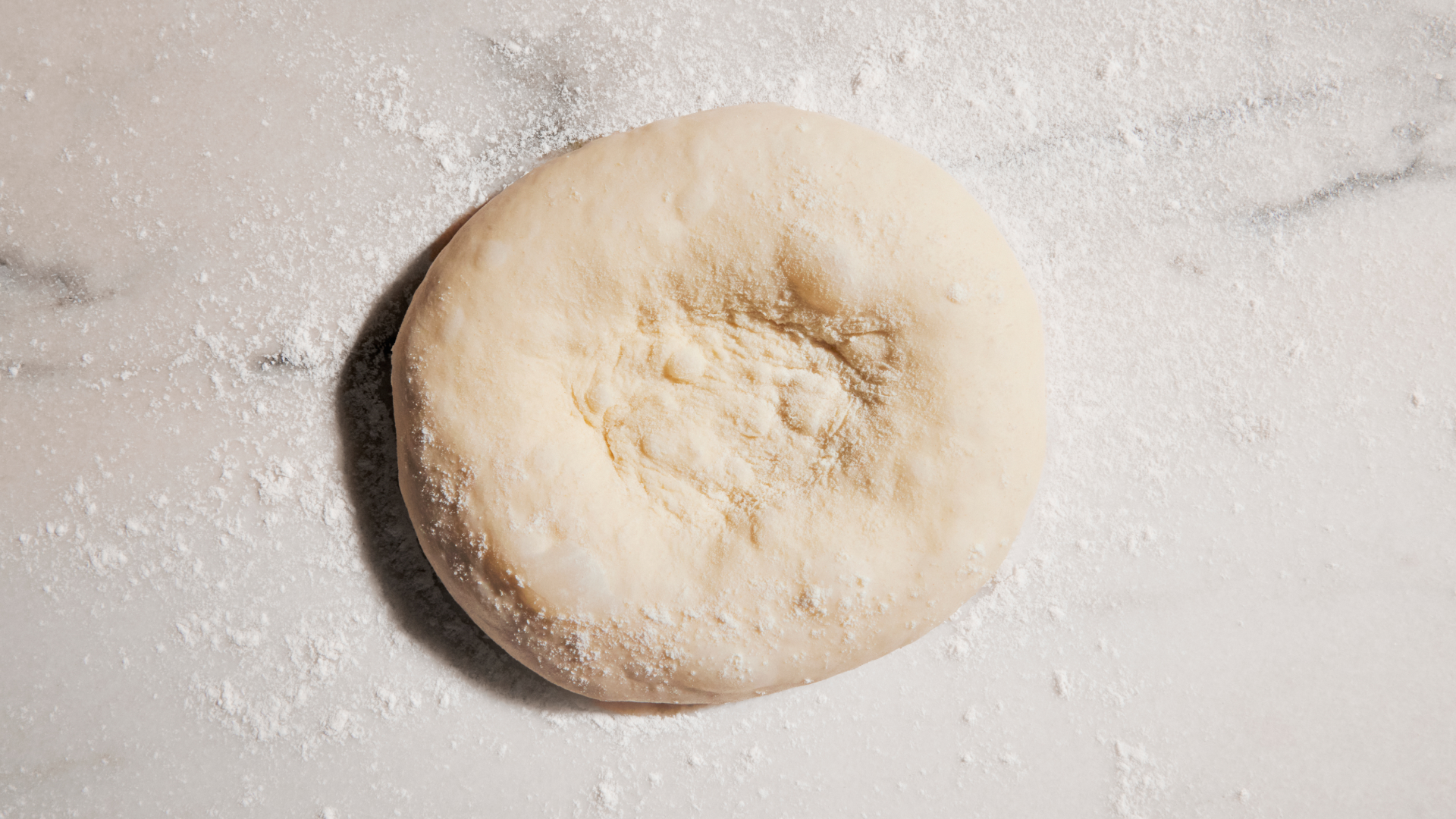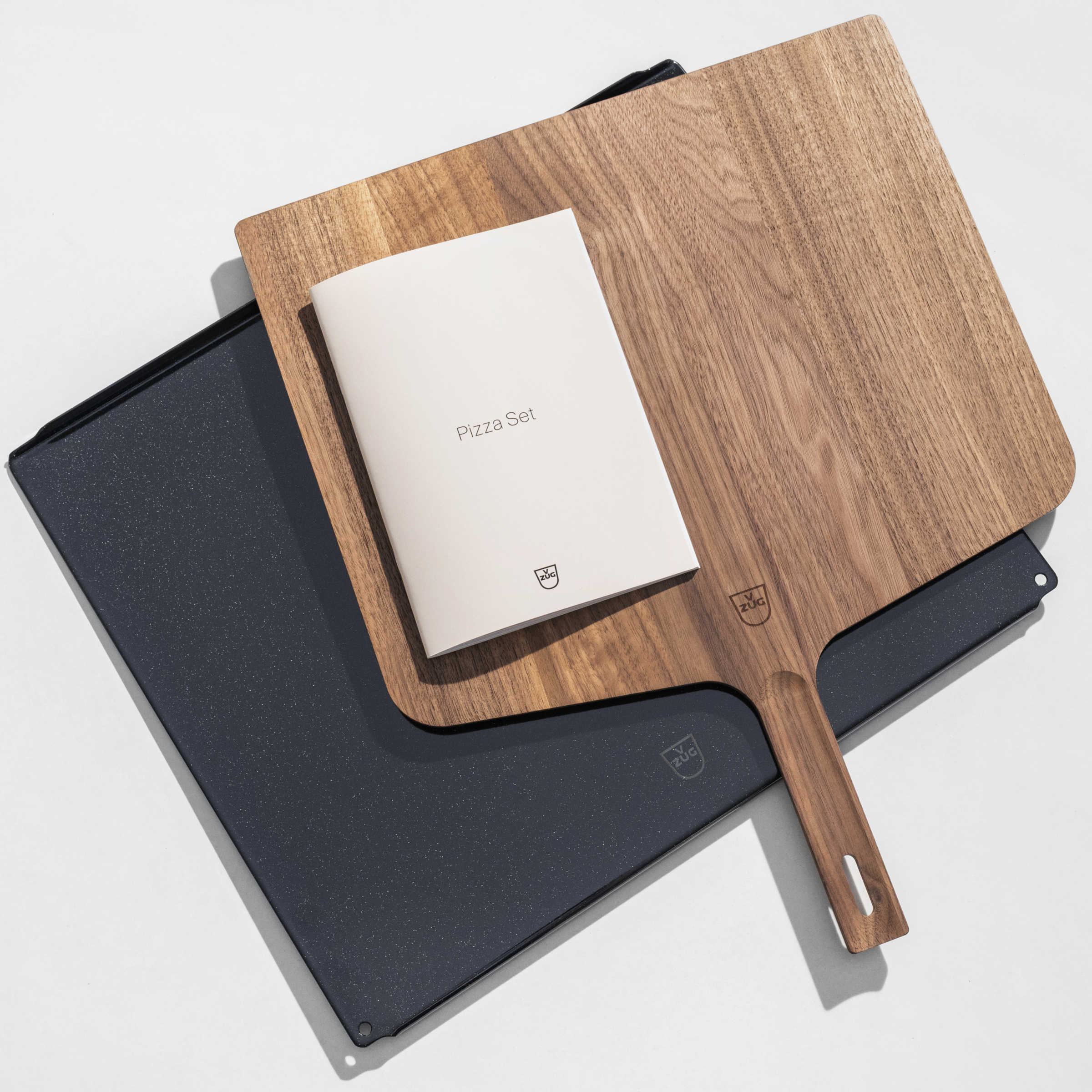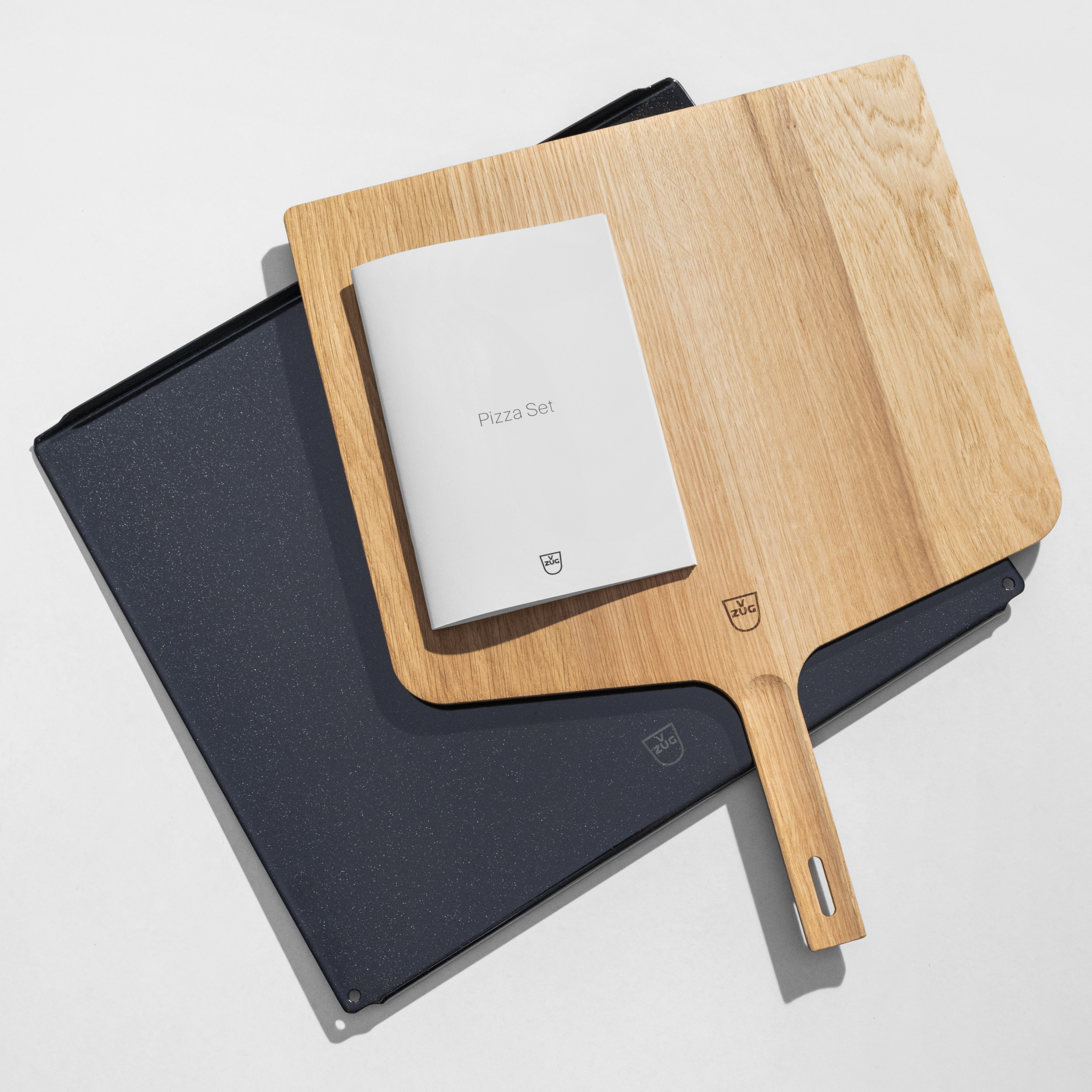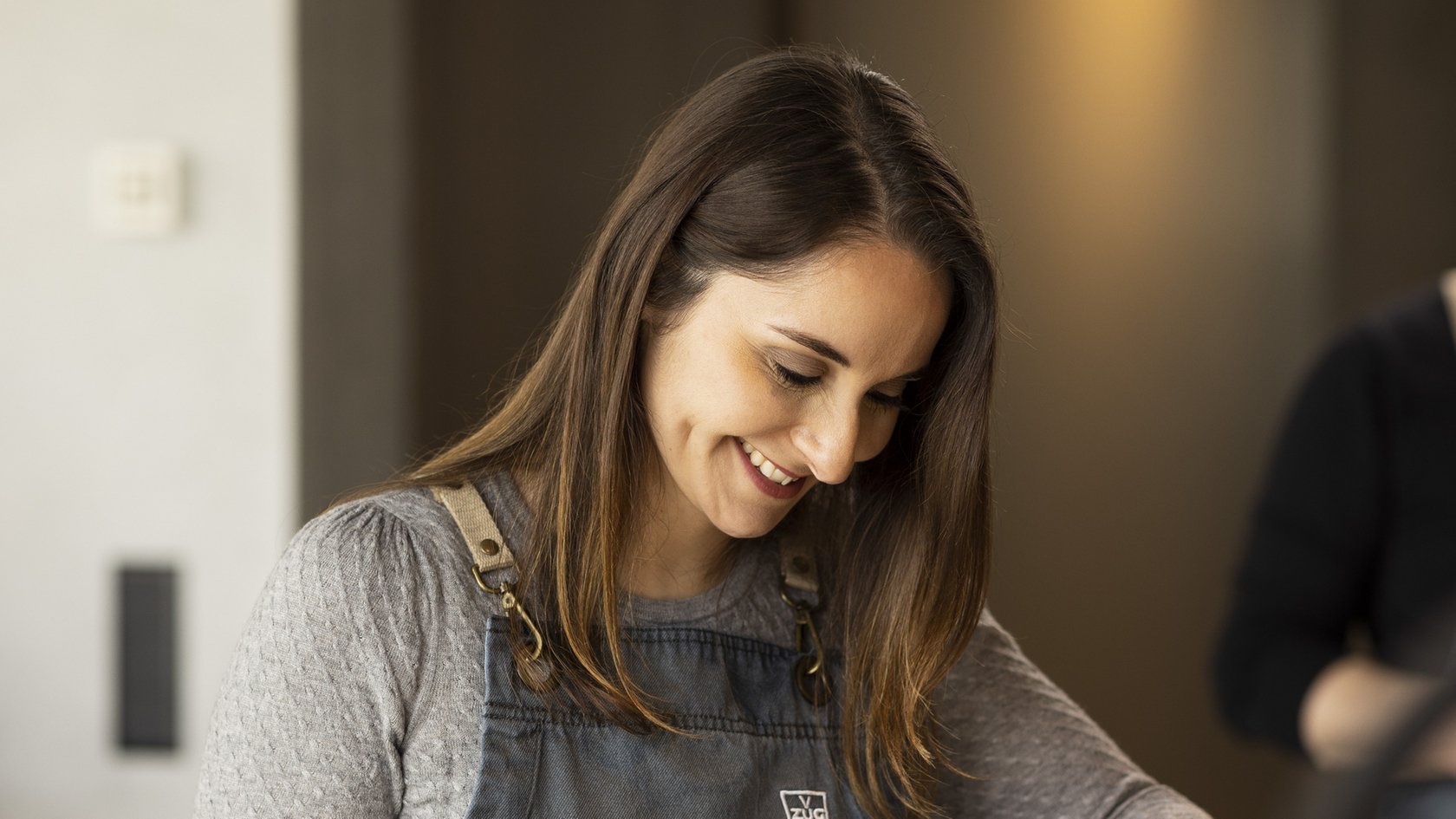Dough
700 g Manitoba flour (type 0)
½ cube of yeast (about 20 g)
crumbled
2 tsp runny honey
450 ml water
20 g fleur de sel
Shaping
Some Manitoba flour (type 0) for shaping
Some durum wheat semolina or semolina for baking
Dough
Put the flour, yeast, honey and about ¾ of the water in the bowl of the food processor and, using the dough hook, knead on a slow speed for about 5 minutes until a sticky dough forms. Add the salt and continue kneading on a medium speed. Gradually pour in the remaining water and knead for about 5 minutes until the dough is smooth and pulls away from the side of the bowl easily. Place the dough on the work surface, shape into a ball, brush with olive oil, then cover and leave to rest for about 15 minutes.
Shaping and folding
Using a dough scraper, gently ease the dough from the work surface. With lightly oiled hands, pick up the dough in the middle and pull up so that it completely comes away from the work surface. Slap the dough back down onto the work surface while turning the dough over slightly in one smooth motion so that the two ends overlap slightly. Repeat this process until a compact ball of dough forms. Each time the dough is picked up, the ends become shorter and the dough more compact. Place the ball of dough in a lightly greased bowl, cover and leave to rest for about 1 hour.
Portioning
Place the dough on the work surface. Lightly brush the top of the dough with oil and divide into four portions. Shape these into compact balls, making sure the oiled top side faces upwards and the bottom stays closed. Place the balls, top-side up, on a baking tray or in a proofing box. Lightly brush the top of the portions of dough with oil again, cover and leave to rise at room temperature for about 1 hour.
Shaping
Put the pizza steel into the cold cooking space and preheat to 350 °C using the Professional pizza mode. Put some flour in a deep plate. Gently remove the first portion of dough with a dough scraper, coat in flour, place on the floured work surface and, using fingers, press from the centre outwards to form an outer crust. Turn the dough over, work it again from the centre outwards. Place one hand in the centre of the dough and use the other to carefully stretch it outwards, turning the dough slightly each time, to get the desired size (about ø30 cm).
Introduce pizza steel
(Pre-)heat cooking space to 350 °C with Professional pizza
Topping and baking
Top the pizza dough with toppings of choice, carefully but quickly slide the pizza onto the pizza peel, transfer straight onto the preheated pizza steel in the cooking space and bake for about 4 minutes until crispy.
Put the pastry in
Professional pizza 350 °C for 4 Mins
Tips
Key is to prepare and bake only one pizza at a time or else the dough will become too soft and the topping will make it too moist. It will also be difficult to slide onto the pizza peel.
If the dough is too sticky, sprinkle some flour, durum wheat semolina or semolina on the work surface before shaping.
The proofing time can be shortened with the Professional baking proofing function: do the first proof at 32 °C for about 45 minutes and the second proof at 32 °C for about 30 minutes.
Manitoba flour (type 0) is available from larger supermarkets and Italian delicatessens. Its high protein content makes it particularly suitable for making pizza dough. Pizza flour can also be used instead of Manitoba flour.
Additional information
Created by
V-ZUG Ltd.
Created on
2/9/25



